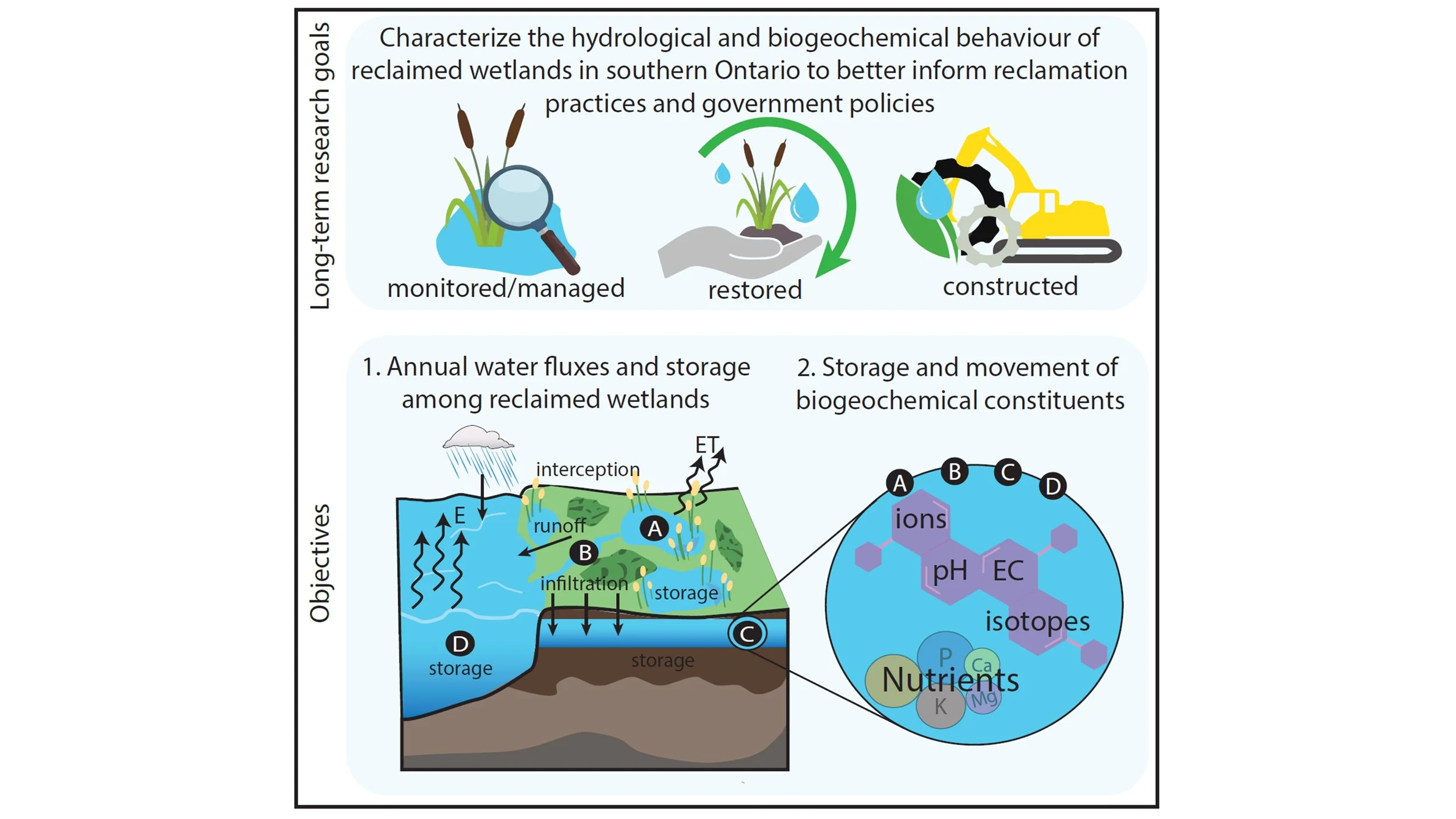
Understanding the impact of mitigation practices on landscape hydrology
Research Themes
The Landscape Hydrology and Restoration Group aims to assess wetlands across the degree of reclamation scale to quantify the impact of different mitigation techniques on wetland hydrology and biogeochemistry and how they differ from pristine wetlands.
In general, we aim to address the following research questions:
1) How and why do water fluxes and storage differ among reclaimed wetlands?
2) How are nutrients stored and moved throughout reclaimed wetlands?
3) How do nutrients and contaminants move from land to water in agriculturally dominated watersheds in the Niagara region?
The role of wetlands in agricultural landscapes
The movement of water (i.e., hydrology) is inextricably linked to nutrient transport and large inputs of water often account for most of the nutrient inputs into waterways. Understanding hydrology is essential to identify how nutrients are transported and implement effective mitigation strategies.
Restored wetlands can potentially remove excess nutrients from drainage channels and thus reduce the frequency and severity of algae blooms as they can effectively retain nutrients. High agricultural activity in the Niagara Region contributes to algae blooms and reclaimed wetlands could play an important role in removing excess nutrients from waterways.
Wetland Restoration in the Niagara Region
Wetlands are one of the most biodiverse ecosystems on the planet that provide important water-related functions such as flood mitigation, water storage and transmission, maintaining water tables, sediment trapping, and improvement of water quality through nutrient and contaminant retention (among many other ecosystem services). These ecosystem services are crucial for the health of surrounding landscapes and economically equate to billions of dollars annually in avoided damages. Despite their known importance, >68% of wetlands in southern Ontario have been lost or degraded in the western end of Lake Ontario. As a result, the Niagara River region has been identified as an area of concern for decades. This research program will assess wetlands across the degree of reclamation scale to quantify the impact of different mitigation techniques on wetland hydrology and biogeochemistry and how they differ from pristine wetlands.


